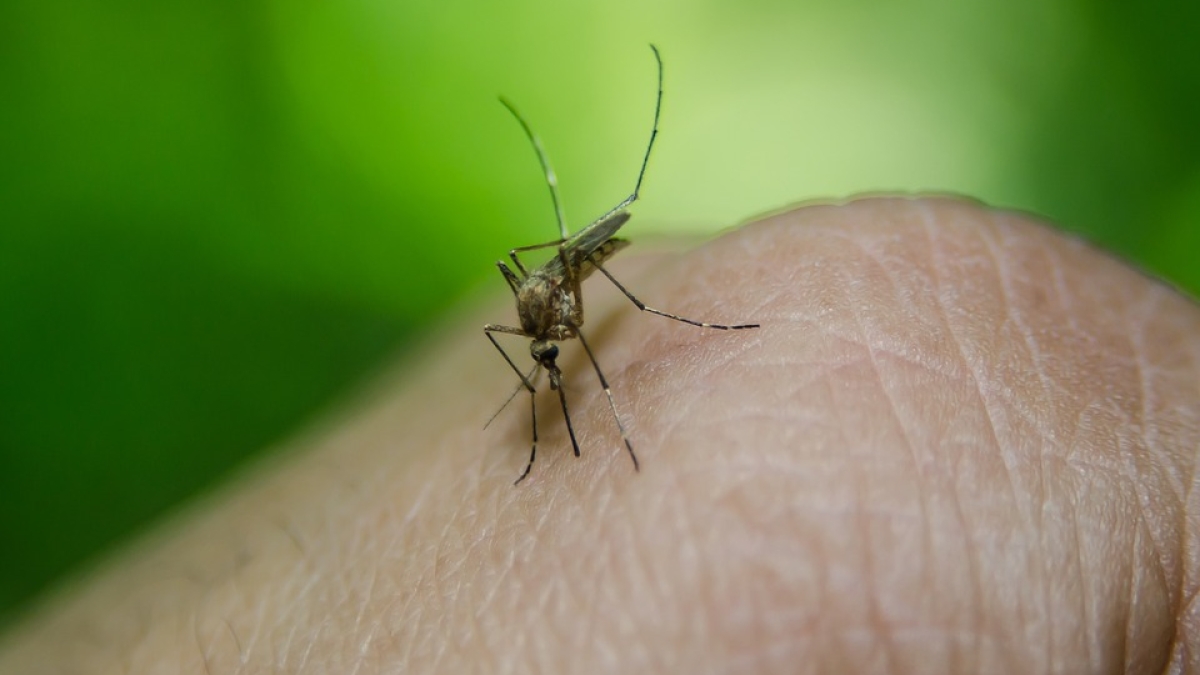Keystone virus shows up in Florida teen’s blood: What the public needs to know

Zika now has a cousin — the Keystone virus — and not everyone likes this new addition to the family.
University of Florida researchers have discovered the Keystone virus in a 16-year-old boy after 18 months of uncertain diagnosis. The mosquito-borne virus, which causes swelling of the brain, fever, nausea and rash, was previously limited to animals. Fears are that it could be widespread.
ASU Now consulted Krijn Paaijmans, a disease ecologist with Arizona State University’s Center for Evolution and Medicine and School of Life Sciences, for answers about the new virus and tips for prevention. His first tip: “I strongly feel we should not focus on Keystone. There are other viruses that could cause outbreaks in Arizona, as we have competent vectorsThat is, transmitters of disease agents. Competence refers to the ability of arthropods to acquire and transmit microbial agents..”
Krijn Paaijmans
Question: What is the Keystone virus, and how does it differ than, say, the Zika virus?
Answer: The keystone virus is a so-called arbovirus, just like its well-known cousins dengue, Zika, chikungunya and yellow fever. These viruses are transmitted by arthropod vectors (hence the acronym ARthropod-BOrne virus) and are often difficult to identify without molecular techniques as the symptoms are very similar: fever, rash, nausea amongst others. This is highlighted by the fact that this patient was already hospitalized in August 2016. After the Zika test showed up negative, it took doctors another 18 months to identify the virus.
Q: When was this virus first discovered, and how did it evolve?
A: The virus was first discovered in 1964, but the Florida teenager is the second case of Keystone in humans in approximately 54 years. Although this could mean that the virus circulates almost exclusively in animals and only occasionally jumps to humans, I believe it much more likely that human infections occur more frequent, but go undetected because of incorrect diagnosis or the fact infected individuals may not seek treatment as the symptoms are commonly flu-like.
Q: The virus is now contained to Florida. Is there a possibility one day it could spread and reach Arizona?
A: The mosquito species transmitting the Keystone virus is believed to be Aedes atlanticus. Although I don’t think this vector is autochthonous (or native) to Arizona, it is recorded in some areas of Texas. In addition, the virus may use local animal species as its reservoir. As far as I know, no human-to-human transmission has been reported. This means that both infectious animals as well as competent vectors need to overlap before transmission to humans can occur. Having said that, Aedes atlanticus may not be the only species that is able to transmit the Keystone virus. Not much is known about this disease, but other Aedes species — some of which are common in Arizona and are known vectors of, for example, dengue and Zika — may turn out to be competent vectors for Keystone.
Having said that, I strongly feel we should not focus on Keystone. There are other viruses that could cause outbreaks in Arizona, as we have competent vectors. Examples are Zika, dengue, chikungunya and yellow fever, which are frequently imported by travelers. In addition, there are other lesser-known arboviruses circulating around the world, such as Mayaro, Usutu and Oropouche virus, which may take us by surprise. Keystone is just one of those pathogens that are lurking around the corner.
We should also not forget that mosquito-borne diseases are already a reality in Arizona: both West Nile and St. Louis encephalitis virus — two arboviruses — infect Arizona residents annually. It will be very important to have adequate surveillance systems in place, whereby all key players (animal reservoirs, mosquito vectors and human hosts) are screened on a regular basis.
Q: What is the best way to avoid getting this or the Zika virus?
A: As with all mosquito-borne diseases: Avoid mosquito bites. This can be achieved by using effective insect repellents; wearing clothing with long sleeves; staying indoors; using screens on porches, verandas, windows and doors; and/or by sleeping under a net. Another thing to do, which will benefit your neighbors too, is to drain all standing water — such as water in flower pots, garbage cans, gutters, water storage tanks, on top of pool covers — and very relevant in Arizona: no green pools. If you feel the number of mosquitoes in your area has become unbearable, you can always contact the Arizona Department of Health Services. They have an excellent mosquito-control program in place.
Q: How does your research at the Center for Evolution and Medicine and School of Life Sciences contribute to disease prevention and control?
A: At ASU, my group is involved in designing and piloting new tools and strategies for mosquito surveillance and control. Next year Silvie Huijben and I will open a new secure insectary facility at ASU, which will allow me to study the competence of local mosquito species to transmit those pathogens that are circulating locally in animal reservoirs or frequently imported by travelers.
In collaboration with the Arizona Department of Health we will soon begin a detailed study on the feeding preferences of mosquito species in the Phoenix area. Our aim is to identify the animal reservoirs of West Nile and St. Louis encephalitis virus, but also to catalogue other pathogens that are circulating the area through sequencing.
Finally, we are piloting a novel vector control tool, whereby mosquitoes are repelled by electric fields. During the design process I constantly wear an “evolution hat”: Mosquitoes and pathogens will evolve if we target them. Therefore we need to come up with approaches to make each tool and strategy as evolution-proof as possible. It is our task to outsmart them in order to prevent and/or control the disease burden.
More Science and technology

ASU-led space telescope is ready to fly
The Star Planet Activity Research CubeSat, or SPARCS, a small space telescope that will monitor the flares and sunspot activity of low-mass stars, has now passed its pre-shipment review by NASA.…

ASU at the heart of the state's revitalized microelectronics industry
A stronger local economy, more reliable technology, and a future where our computers and devices do the impossible: that’s the transformation ASU is driving through its microelectronics research…

Breakthrough copper alloy achieves unprecedented high-temperature performance
A team of researchers from Arizona State University, the U.S. Army Research Laboratory, Lehigh University and Louisiana State University has developed a groundbreaking high-temperature copper alloy…


